Hubs and switches are essential hardware for creating solid and reliable networks. Although they help extend networks, they differ in many key ways. One major difference is how they handle data.
When hubs receive information, they send that data to every connected device. In contrast, switches are smarter, meaning they can read the mac address in the data packet and send it only to the device that needs it.
While some networks still use hubs, switches are gradually taking over in many situations due to their efficiency. This article will explore networking devices and their differences to show businesses which is more popular and why.
Table of Contents
How big is the networking device market?
A quick history of hubs and switches in networking
What are hubs?
What are switches?
Hubs vs. switches: What are the differences?
Network hubs vs. switches: Which one is more popular today?
Final words
How big is the networking device market?
The global network device market reached US$ 26.4 billion in 2022. Experts predict sales will surge at a 5.6% compound annual growth rate (CAGR) from 2023 to 2032, pushing the market’s value to US$ 45.5 billion by 2032. The market owes its rapid growth to the increasing prevalence of high-speed internet and digitalization globally and the rising usage of network devices in different areas, including residential, enterprise, and industrial networking.
According to the same report, North America will remain the most profitable region over the forecast period, with the United States contributing significantly. Experts estimate the North American market will reach US$ 18.921 billion by 2032. Additionally, indoor networking devices generated the most sales and will grow at 5.5% CAGR over the forecast period.
A quick history of hubs and switches in networking
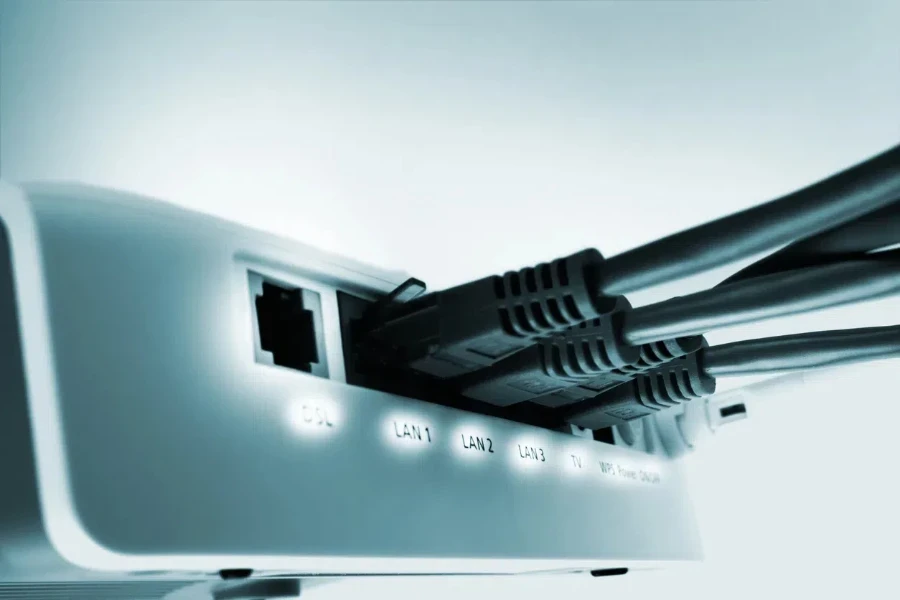
In the early 1980s, hubs entered the market as simple tools for linking multiple computers in a local area network (LAN). These devices operated at the most basic OSI model level (Layer 1), sending data to all connected devices at once. This basic function worked fine for that era’s small, low-traffic networks—but as networks grew, this approach caused data collisions and wasted bandwidth.
By the mid-1990s, switches debuted as a smaller alternative and quickly gained popularity. Unlike hubs, switches operate at a higher level (Layer 2) and can send data directly to the device requesting it through MAC addresses. This advance significantly reduced data collisions and made networks much more efficient, so switches quickly became the go-to choice for growing networks.
What are hubs?
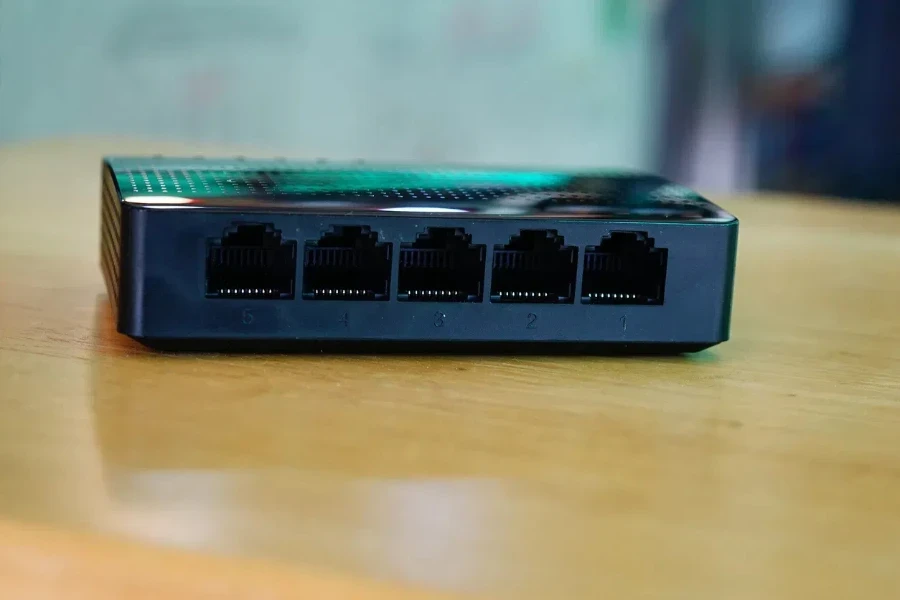
Hubs are basic devices with one Ethernet port connecting to a router and multiple output ports for other devices. When hubs receive data, they send it to every connected device, leaving each one to determine whether it is meant for it. One downside of hubs is that they can only send or receive data at one time (half-duplex), which can slow down network speeds.
Network hubs also come in two types: active and passive variants. Active hubs are powered variants that boost incoming signals, allowing the data to travel farther. On the other hand, passive hubs simply connect multiple devices in a network without amplifying signals or needing a power source.
What are switches?

Network switches are more advanced than hubs. They can learn the routes and ports needed and read the data packet headers to send information directly to the correct device using its unique MAC address. Since switches operate at layer 2 of the OSI model, they can send and receive data at the same time, using the entire network’s bandwidth.
Additionally, network switches serve three main roles. They can be edge switches, helping manage traffic flow in and out of the network from devices and access points. They can also be distribution switches (positioned in the middle of the network) or core switches, which become the network’s backbone.
Hubs vs. switches: What are the differences?
1. Traffic management
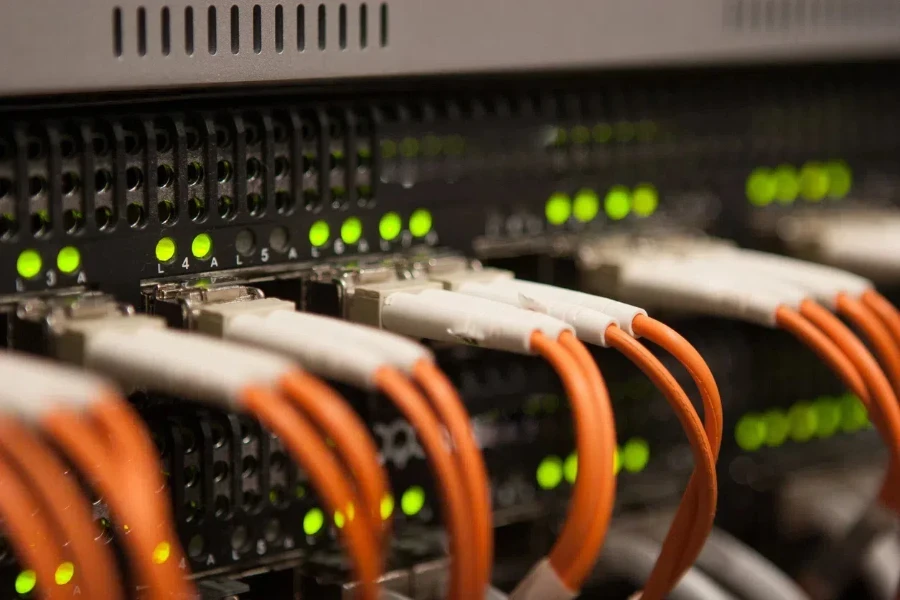
When consumers connect multiple devices to a hub, they all have to share the same bandwidth. It can become an issue if several devices are transmitting data simultaneously. This issue is especially limiting for tasks that require a lot of data, like streaming or large file transfers. Hubs don’t manage traffic well, so data collisions are more likely, making them less reliable for smooth data transmission.
Contrarily, switches give each device its dedicated bandwidth, allowing data to flow more smoothly. They can identify where each data packet needs to go and send it only to the intended device. For this reason, switches reduce the chances of data collisions and make the network more efficient.
2. Performance
Hubs aren’t ideal for networks that might grow over time because they can’t handle traffic efficiently. As consumers add more devices, the network’s performance will drop noticeably. Since hubs send every data packet to all connected devices, it takes longer for the correct data to reach its destination, causing annoying delays.
Conversely, ethernet switches can manage traffic much better, meaning they can handle more data without slowing down. Hence, switches are perfect for expanding networks. Switches can maintain a strong and reliable performance even when consumers connect more devices.
3. Applications
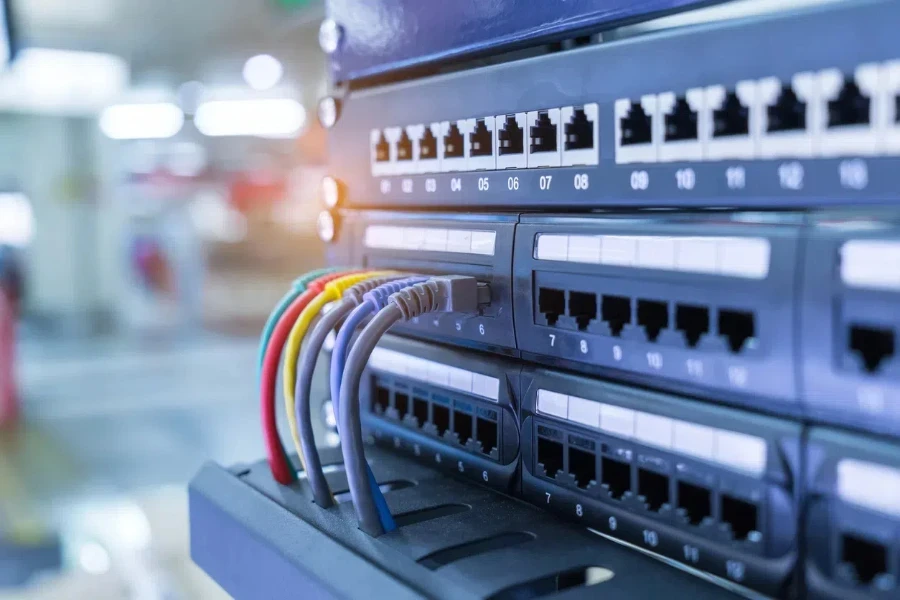
Hubs have a simple role in today’s networks: they connect multiple Ethernet devices in one place. They are an affordable and practical solution for small LAN setups where the router doesn’t have enough Ethernet ports. Additionally, hubs are a cost-effective way to connect multiple devices in environments with low network traffic.
On the other hand, switches are essential for modern enterprise networks and offer much more functionality. Depending on the network’s needs, switches can:
- Control which Ethernet ports are active.
- Monitor network traffic and connection status.
- Manage whether a port operates in half or full duplex.
- Configure QoS (Quality of Service) to prioritize essential network activities.
4. Security
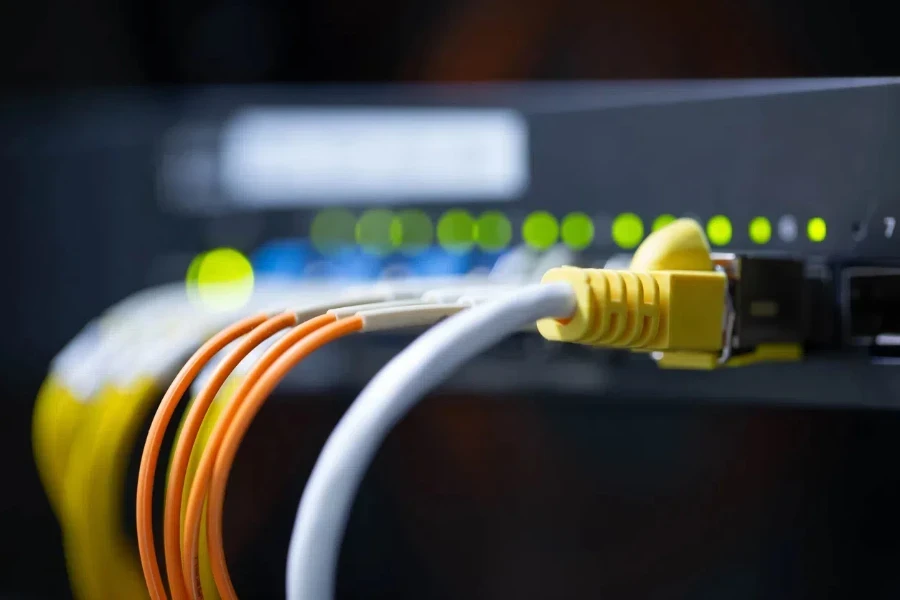
Since hubs broadcast every data packet to all connected ports, hackers can intercept and read sensitive information more easily. Hubs don’t have any built-in security features to limit who can access the network, which makes managing and securing the network more difficult.
Switches improve security by sending data only to the device it’s meant for, making it harder for unauthorized users to intercept. Managed switches take it a step further, allowing network administrators to create Access Control Lists (ACLs) to add an extra layer of protection.
5. Complexity
Hubs are very easy to set up—consumers only need to plug in their devices, and everything will be ready to go. Since hubs don’t need any configuration, they are a simple option for people who aren’t tech-savvy.
Conversely, switches often require configuration, which can be more complex and require some technical know-how. Advanced features like VLANs or Quality of Service (QoS) settings can sometimes create compatibility problems with older hardware or software.
6. Specifications
Here’s a look at the different specs for network hubs and switches.
| Specification | Hub | Switch |
| Purpose | Hubs help connect multiple computers to a personal network. | Switches can intelligently manage a network between various devices. |
| Software | Hubs don’t use software. | Switches come with software for administration. |
| OSI model (Layer) | Hubs work on the physical layer (Layer 1) | Switches usually work on Layer 2, but more sophisticated models can also work on Layer 3, 4, or 7. |
| Speed | 10 Mbps | 10/100 Mbps, 1 Gbps, and 10 Gbps |
| Transmission type | Hubs offer frame flooding, unicast, multicast, or broadcast. | Switches use broadcast before unicast and multicast, depending on consumers’ needs. |
| Device type | Hubs are not intelligent devices. | Switches are intelligent devices. |
| Transmission mode | Hubs use half-duplex transmission modes. | Switches can use half and full duplex modes. |
| MAC addresses | Hubs can’t store MAC addresses. | Switches can store MAC addresses by saving them in Content Addressable Memories (CAM). |
| Ports | Hubs usually have 4 to 24 ports. | Switches can have anywhere from 4 to 48 ports. |
Network hubs vs. switches: Which one is more popular today?
Hubs are typically more affordable than switches, making them a good choice for temporary setups or small projects with minimal networking needs. But despite their lower cost, they are not very popular, especially in modern networks.
On the other hand, switches have advanced capabilities that come at a higher upfront cost. However, their expensive nature hasn’t stopped them from attracting more attention in 2024.
Final words
Network hubs and switches help consumers manage their network needs but offer different benefits. Hubs are the more economical option for consumers with minimal networking needs. As long as users don’t need advanced features and are okay with basic functionality, they won’t need more than hubs.
However, switches appeal to consumers (the majority here) who are looking for better performance and security. Although they are more expensive and may require ongoing maintenance, switches are more popular for modern networks.
So, businesses looking for the more popular option to sell may attract more people with switches. But don’t write off hubs just yet, as they still attract a sizable audience in 2024.
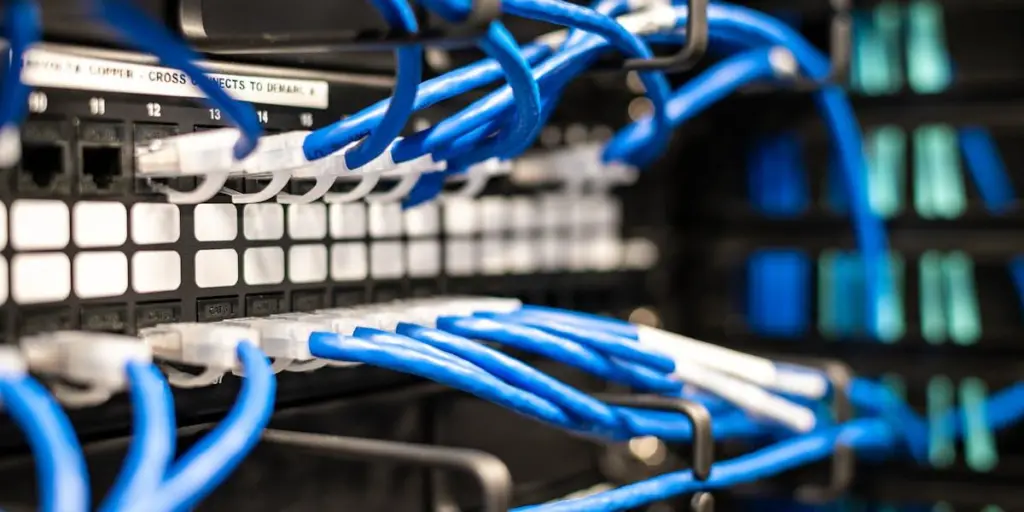




 বাংলা
বাংলা Nederlands
Nederlands English
English Français
Français Deutsch
Deutsch हिन्दी
हिन्दी Bahasa Indonesia
Bahasa Indonesia Italiano
Italiano 日本語
日本語 한국어
한국어 Bahasa Melayu
Bahasa Melayu മലയാളം
മലയാളം پښتو
پښتو فارسی
فارسی Polski
Polski Português
Português Русский
Русский Español
Español Kiswahili
Kiswahili ไทย
ไทย Türkçe
Türkçe اردو
اردو Tiếng Việt
Tiếng Việt isiXhosa
isiXhosa Zulu
Zulu